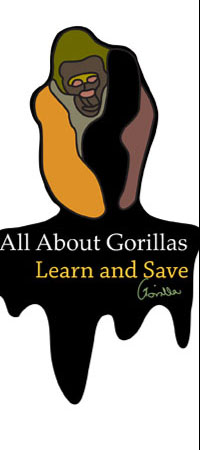|
Gorillas are the largest members of the primate family and are closely related to humans, with 98% of their DNA identical to that of humans. Unlike other primates they are terrestrial, meaning they do not climb trees and are land dwelling, inhabiting the tropical rainforests of central Africa. Historically the gorilla has been portrayed as a vicious killer; however they are shy gentle creatures that would not attack humans unless provoked.
Gorillas are classified as mammals, which is defined by the Oxford English dictionary as a ‘Warm-blooded vertebrate animal that has hair or fur, secretes milk, and (typically) bears live young’ (0ED 2010). Upon their discovery gorillas were classified as one species, however they are now separated into two species and four sub species according to geographical location and physical characteristics. They live in groups called a troop lead by a dominant silverback male, and are highly sociable animals, maintaining strong bonds between group members.
In the wild their only predators are leopards, which can attack vulnerable youngsters and the biggest threat to gorillas is man. In recent decades gorilla populations have been affected by habitat loss, disease and poaching. Subsequently all gorilla species are classified as endangered by the International Union for Conservation of Nature (IUCN). Due to the vast dense areas in which they live it is difficult to monitor and protect gorilla populations and therefore difficult to implement successful conservation techniques. However conservation efforts persist and several governmental and non governmental organizations named 2009 the ‘Year of the Gorilla’ with the aim of working together to further improve gorilla conservation.
Species Identification
There are two recognized gorilla species the Eastern Gorilla and Western Gorilla, defined by the areas in Africa which they inhabit. Within these classifications are four subspecies including the Eastern Lowland Gorilla, Mountain Gorilla, Cross River Gorilla and Western Lowland Gorilla. All subspecies live in varying habitats, have unique physical characteristics and have differing populations.
Eastern Gorilla (Gorilla beringei)
Two subspecies exists:
Species: Eastern Lowland Gorilla
Scientific name: Gorilla beringei graueri
Location: Democratic Republic of Congo
Population: Less than 3000
Conservation status: Endangered
Physical characteristics: Largest of gorilla sub species, longer arms than the mountain gorilla and shorter hair and teeth.
Species: Mountain Gorilla
Scientific name: Gorilla beringei beringei
Population: Less than 720
Conservation Status: Critically Endangered
Physical characteristics: Large skull, wide face and angular nostrils. Larger body and longer hair than eastern lowland gorilla.
Western Gorilla (Gorilla Gorilla)
Two subspecies exists:
Species: Western Lowland Gorilla
Scientific name: Gorilla gorilla gorilla
Location: Democratic Republic of Congo
Population: 100,000
Conservation status: Critically Endangered
Physical characteristics: Males silverback colouring extends onto the thighs, also have redder hair on their heads.
Species: Cross River Gorilla
Scientific name: Gorilla gorilla diehli
Population: Approximately 300
Conservation Status: Critically Endangered
Physical characteristics: Smaller skull and teeth than other gorilla as well as shorter hands and feet.
Physical Characteristics
Gorillas are quadrupedal meaning they move around by walking on their knuckles, their huge arms provide balance and support for their large frames. Size and weight varies between species and gender, with males reaching heights of 1.7 m when stood tall and weighing between 170 kg to 240 kg. Females usually weigh between 70 kg to 100 kg and are shorter reaching heights of 1.5 m.
|
|

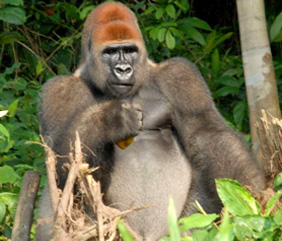
Male silverback Western Lowland Gorilla (Gorilla gorilla gorilla) © Pierre Fidenci
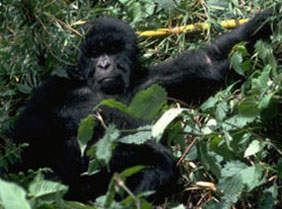
Mountain Gorilla (Gorilla beringei beringei) Gerald and Buff Corsi © California Academy of Sciences.
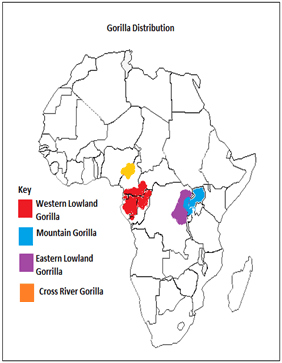
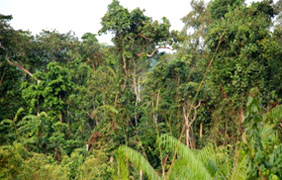
Habitat of gorillas in the Republic of Congo © Pierre Fidenci
|

